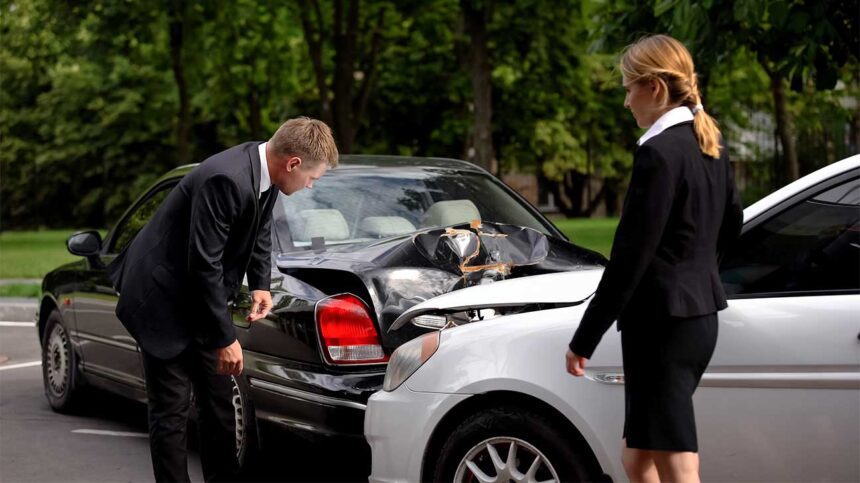Being involved in a car accident takes a heavy toll on one’s body. It also takes a toll on one’s precious car. Each of us has a personal connection to our daily drivers. After the unfortunate incident of a car accident, a vehicle no longer holds its original financial value. Rather, it holds a diminished value on account of being involved in a car crash. A legal expert is the best person to help one navigate the areas relating to a car’s value. In such a case, one should consult a car accident attorney for a professional opinion.
Car accidents can have significant financial repercussions. In addition to repair costs and medical bills, one aspect that often goes unnoticed is the diminished value of a vehicle after an accident. This refers to the decrease in market value that occurs even after a successfully repaired vehicle. While most insurance policies cover repairs, they typically do not compensate for the diminished value of the car. In this article, we will delve into the concept of diminished value claims and provide valuable insights on how to navigate this process.
What is Diminished Value?
Diminished value refers to the difference between a vehicle’s pre-accident market value and its post-repair market value. In simpler terms, it’s the monetary amount by which your car’s worth decreases following an accident, even if it undergoes repairs that restore its functionality.
Understanding Different Types of Diminished Value
There are generally three types of diminished values associated with car accidents: inherent diminished value, repair-related diminished value, and immediate diminished value.
- Inherent Diminished Value:
One type of diminished value is called inherent diminished value (IDV). IDV focuses on the negative perception buyers may develop about a vehicle involved in an accident — regardless of how well it was repaired. Potential buyers may be skeptical about undisclosed issues, reduced longevity, or poor performance related to the accident history.
- Repair-Related Diminished Value:
Repair-related diminished value pertains specifically to visual discrepancies or differences found on a repaired vehicle compared to its pre-accident condition. Even with expert repairs completed by qualified technicians, buyers may still perceive some level of depreciation due to lingering doubts about the quality and reliability of those repairs.
- Immediate Diminished Value:
Immediate diminished value arises when a claimant’s vehicle suffers both structural (e.g., frame damage) and cosmetic damage attributable solely to another driver’s negligence or fault in an accident scenario — even when all necessary repairs have been carried out perfectly.
Navigating the Diminished Value Claim Process
When it comes to filing a diminished value claim, several factors can influence the outcome. These factors may include:
- State Regulations
Different states have different regulations regarding diminished value claims, so it’s important to understand and abide by state-specific rules and procedures.
- Documentation and Evidence
Building a strong case is crucial in successful diminished value claims. Collecting documentation such as repair reports, accident records, appraisals from reputable sources, and photographs of any visible damage before repairs are essential in supporting your claim.
- Expert Opinion
Consulting with an experienced professional specializing in diminished value claims can greatly enhance your chances of a favorable settlement. They can provide expert opinions and valuations to align with established industry standards.
- Insurance Policy Coverage
Understanding the details of your insurance policy is vital before making a diminished value claim. Policies vary widely from one another, so it’s necessary to review your policy to determine if you’re eligible for compensation.
- Compensation Negotiation
Engaging in effective negotiation techniques is key when seeking fair compensation for your vehicle’s diminished value. Insurance companies often use aggressive tactics to reduce payouts. On this account, it is advisable to engage professional assistance to minimize compromise on your settlement package.
Evaluating Different Methods of Diminished Value Calculation
Determining the exact amount of diminished value can be challenging. Insurance companies may use different methods to calculate the diminished value, and it’s essential to understand these methodologies.
- Market Comparison Method
This approach involves comparing a vehicle’s pre-accident value with similar models that have no accident history. Companies consider factors such as mileage, overall condition, age, and optional features.
- Rule of Thumb Method
The rule of thumb method sometimes used by insurance companies is a simpler calculation based on generic percentage reductions. While this method may not accurately reflect the true diminished value, it is still helpful to understand how insurance adjusters may evaluate your claim. It helps get a ballpark estimate.
- Independent Appraisal Method
Engaging an independent appraiser who specializes in assessing diminished values can provide an unbiased assessment of your vehicle’s worth both before and after the accident. These professional valuations often carry more weight when negotiating with insurance companies for a fair settlement.
Conclusion
Diminished value claims are an often overlooked aspect of car accidents, but their financial impact can be significant. Understanding the different types of diminished value and how they are calculated is crucial for vehicle owners seeking fair compensation. Navigating the diminished value claim process can be complex, with various factors influencing the outcome. It is essential to familiarize yourself with state regulations, gather thorough documentation and evidence, consult with experts in the field, understand your insurance policy coverage, and negotiate effectively to secure a fair settlement.






